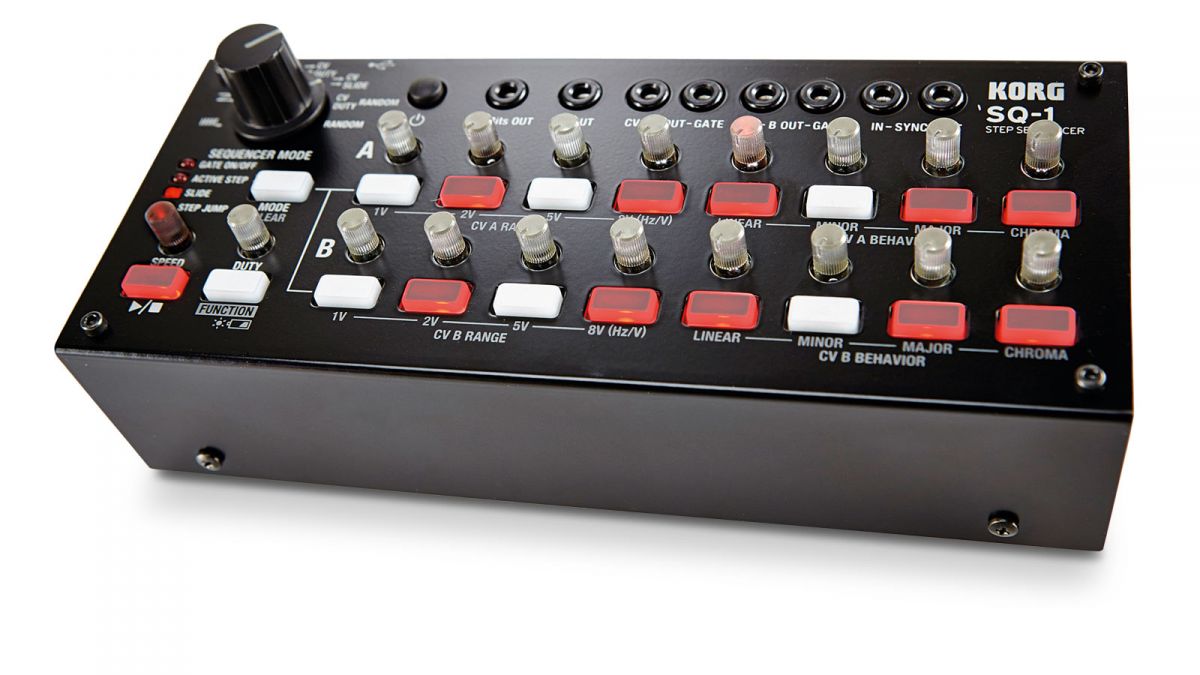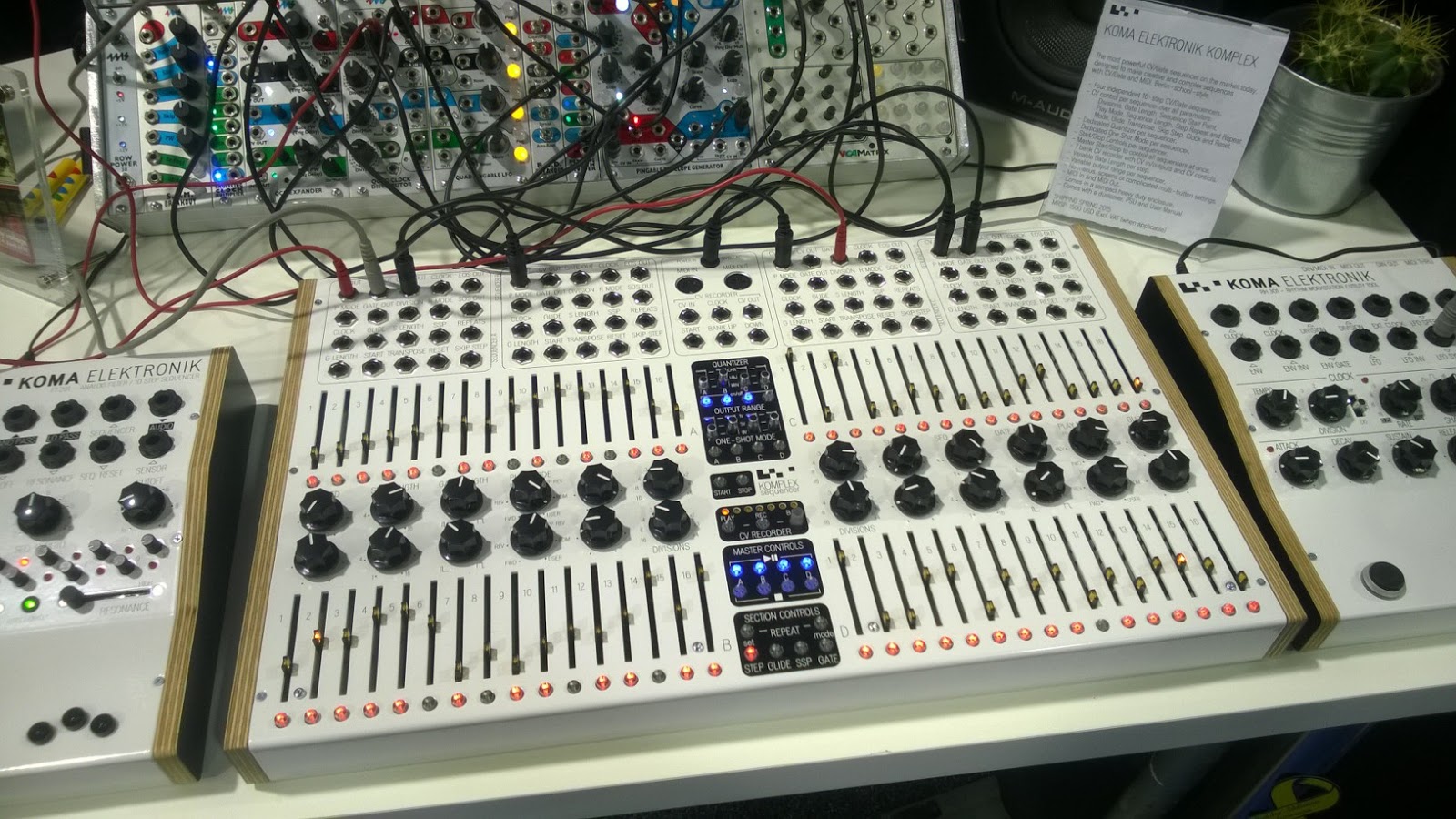Week 2 The year of Sequencers
As I mentioned last week, one of my goals is to conduct a field research in sequencers. The goal of this post is to briefly go over the most popular sequencer products released in 2015 and later, how different manufactures introduced different features and what I would love to borrow from such features and introduce in my design. I think that it’s a very interesting and rewarding exercise to attempt to see what other people have been putting out there and try to improve from that.
Here's a cool survey from Synthopia were users voted their favorite hardware sequencers of 2015. I picked a few from the rankings to conduct a case study. Let’s get started.
Korg SQ-1

The cheapest hardware sequencer on the market, with a mere $99 price tag. It’s also battery operated so you can carry it wherever you want. This sequencer the basic features you would expect out of a linear step sequencer, however including more interesting options like scales. It includes comprehensive CV output options as well as midi support. It can act as a 2 x 8 step sequencer as well as a 1 x 16 step sequencer or other more interesting options. This is a basic model, so it could be fun to emulate a version on Reaktor but I aim to implement more features in my final version.
Koma Elektronik Komplex Sequencer

This sequencing titan is much more expensive than the SQ-1 (about 15 times more :( ). The Komplex sequencer features 4 fully featured 16 step sequencers, each with an incredible array of CV input and output features. The remarkable aspect of this feature is that you can use one sequencer to modulate another one, leading to astonishing sequencing effects. As seen on the website: “Controls include Speed, Sequence Length, Gate Length, Play Mode, Glide, Division, Transpose, Repeat, Sequence Start Point and Skip.” I hope to do something similar with my final product, I find this idea of “Sequencing the sequencer” very fascinating. This product can be used at its fullest potential within the modular world, given its fantastic availability of CV connections.
Kilpatrick Audio Carbon
 Taking inspiration from their acclaimed K4815 Pattern Generator eurorack module, this desktop sequencer seems the perfect compromise for today’s studios, with enough connectivity to interface with a wide variety of vintage and modern gear, as well as DAW integration. The presence of a display immediately caught my attention. I was secretly hoping they would include a Game of Life sequencing feature. I actually wrote a self-generative compositional algorithm in ChucK last quarter in Music 220B if you’re interested. What sets apart this sequencer from the other ones is its ability to record multiple MIDI tracks and its massive routing possibilities, it also features chords, with a max of 6 voices per step. While researching this product, I was looking for outstanding sequencing ideas to incorporate in my final design. This product, however, hasn’t launched yet, so it was difficult to find features at great level of detail.
Taking inspiration from their acclaimed K4815 Pattern Generator eurorack module, this desktop sequencer seems the perfect compromise for today’s studios, with enough connectivity to interface with a wide variety of vintage and modern gear, as well as DAW integration. The presence of a display immediately caught my attention. I was secretly hoping they would include a Game of Life sequencing feature. I actually wrote a self-generative compositional algorithm in ChucK last quarter in Music 220B if you’re interested. What sets apart this sequencer from the other ones is its ability to record multiple MIDI tracks and its massive routing possibilities, it also features chords, with a max of 6 voices per step. While researching this product, I was looking for outstanding sequencing ideas to incorporate in my final design. This product, however, hasn’t launched yet, so it was difficult to find features at great level of detail.
Squarp Instruments Pyramid
 Out of our selection, this seems the most promising sequencer. Just like the , the Pyramid is a desktop sequencer with full analog and digital MIDI/CV connections. This sequencer does seem to feature some interesting sequencing effects, which are called “MIDI effects” some of which are reported on the company website: “quantization, swing, randomizer, humanizer, harmonizer, arpeggiator”. It also features fully independent polyrhythms on every individual tracks, leading to interesting, ever-evolving patterns. Another features I was amazed by was the Euclidean grooves, which is an algorithmic strategy to create uncommon and rich rhythmic patterns. I would love to incorporate these ideas into my final sequencer.
Toggle Menu
Out of our selection, this seems the most promising sequencer. Just like the , the Pyramid is a desktop sequencer with full analog and digital MIDI/CV connections. This sequencer does seem to feature some interesting sequencing effects, which are called “MIDI effects” some of which are reported on the company website: “quantization, swing, randomizer, humanizer, harmonizer, arpeggiator”. It also features fully independent polyrhythms on every individual tracks, leading to interesting, ever-evolving patterns. Another features I was amazed by was the Euclidean grooves, which is an algorithmic strategy to create uncommon and rich rhythmic patterns. I would love to incorporate these ideas into my final sequencer.
Toggle Menu